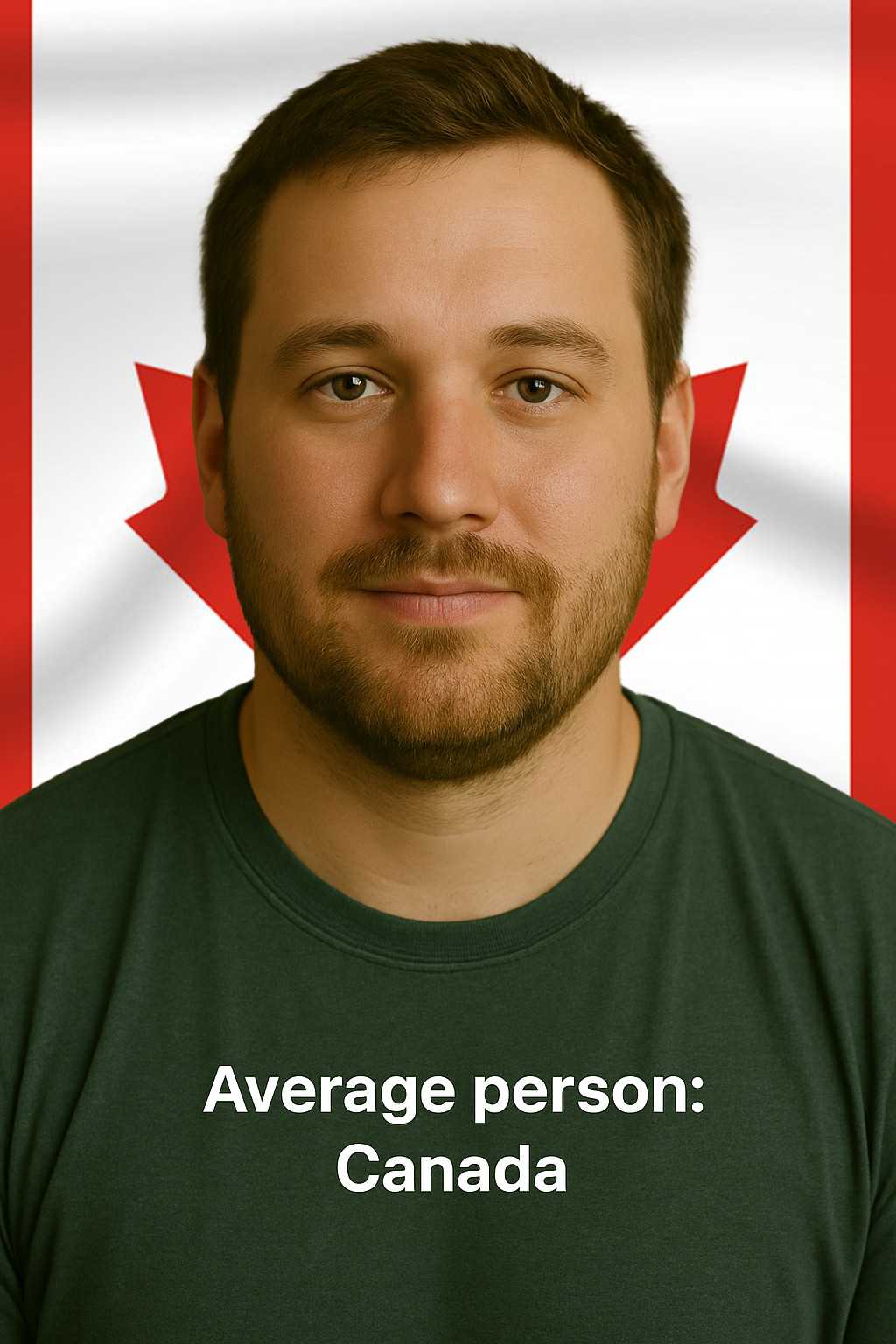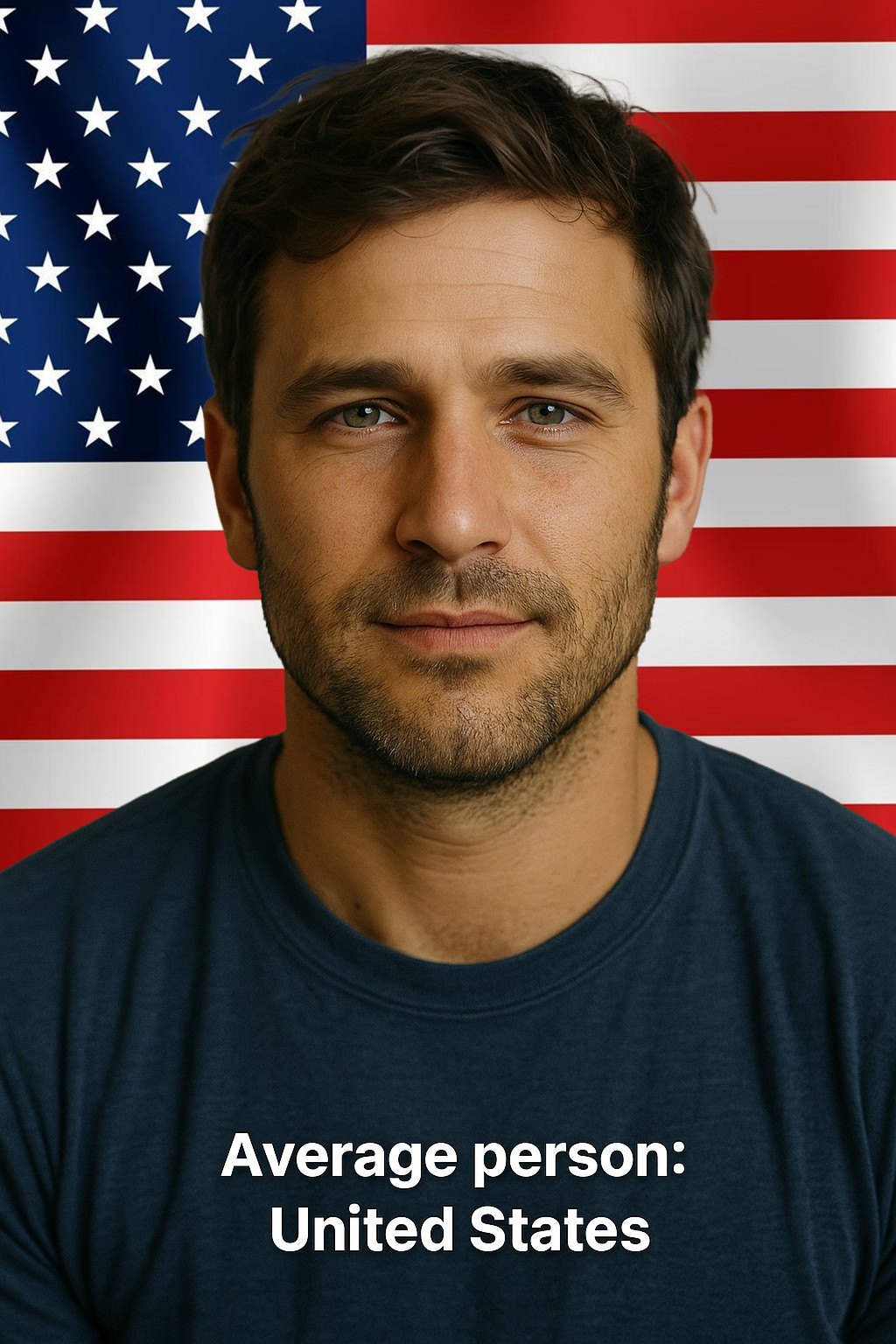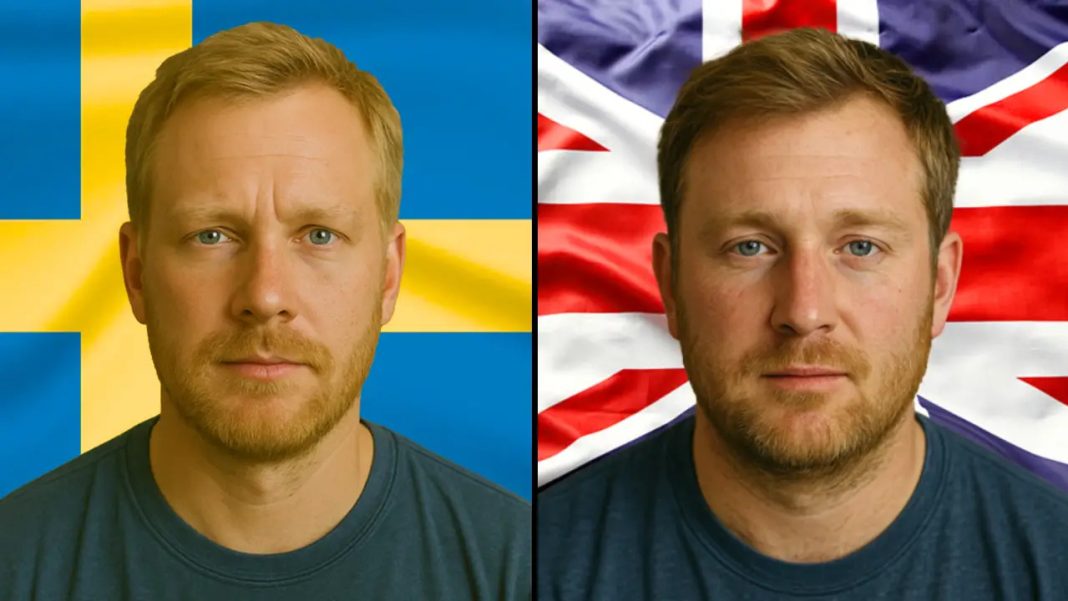The Global Average Man: An AI Interpretation of Masculinity
In an era dominated by artificial intelligence, a recent project has stirred considerable conversation by attempting to portray the “average man” from various countries. Utilizing sophisticated data-driven modeling and image generation techniques, these composites have sparked interest, skepticism, and humor across the internet. The images aim to represent the typical male face from dozens of nations, but as they circulate online, people are questioning everything from cultural relevance to the underlying assumptions of the algorithms used. This article delves into the AI-generated representations and explores the diverse reactions they have evoked.

Canada: Politeness with a Hint of the Macabre
The portrayal of the average Canadian man has drawn particular attention for its eerie resemblance to Dracula. One viewer humorously remarked, “Canada giving Dracula a lil bit with the leaf,” while another quipped, “Sooo sorry, eh? But can I kindly suck your blood?” With pale skin, a subtle smirk, and a maple leaf subtly incorporated into the background, this representation has been described as both polite and vaguely undead. Observers noted the overly sanitized look, prompting one commenter to mischievously correct the accent to, “We’d say ‘sooo sorry ABOOT that, eh.’” This blend of charm and creepiness paints a portrait of a character that seems ready to apologize before taking a bite out of life—quite literally.

The British Average: Tired Eyes and Cynical Humor
When it comes to the British representation, reactions have ranged from humorous to relatable. The AI-generated man features tired eyes and a faint scowl, leading one viewer to joke, “Pretty sure the U.K. guy installed my new boiler last week.” Another pointed out a striking resemblance to public figures by claiming he looked like a blend of “King Charles and Prince Harry.” This portrayal has resonated with many, prompting comments like, “Why does he look like the guy my ex settled down with?” The collective sentiment appeared to encapsulate a quintessentially British experience—“4 pints of Madri and one for yourself”—suggesting a relationship with alcohol that is all too familiar in British culture.

The Polished American: A Glimpse of Perfection
The American representation has raised eyebrows for its almost overly polished appearance. “U.S.A. is defo from the Bay Area,” remarked one viewer, while another noted, “America wishes that was its average guy.” The image depicted a man with a trendy haircut, perfect skin, and a confident gaze, which many felt was suspiciously glossy. “It looks like someone AI-generated their crush,” one observer noted, highlighting the dissonance between the image and the cultural diversity that characterizes the United States. Critics argued that this portrayal misses the mark by failing to capture the nation’s rich tapestry of cultures and ethnicities.
The Aussie Interpretation: Missing the Rugged Charm
Australia’s representation has also faced scrutiny, particularly regarding its lack of authenticity. “Why doesn’t Australia have a mullet?” one viewer asked, while another remarked, “Australia just looks happy to be invited.” The image showcases a well-groomed, smiling man, which some found lacking in the rugged, sunburnt charm typically associated with Australian masculinity. Reactions included sentiments like, “Kind of… meh?” and “Not enough bogan energy,” suggesting that the portrayal failed to capture the vibrancy and laid-back nature of Australian culture.
Italy: A Classic Look with Missing Elements
The portrayal of the average Italian man has received mixed feedback, with one viewer stating, “Italy’s isn’t too bad — not enough floppy hair though.” Others humorously commented, “Average Italian man is tired of Americans saying they’re Italian.” The AI-generated Italian features classic good looks but lacks some quintessential elements that many associate with Italian men. One observer asked, “Where are the hand gestures?” while another quipped, “Can we generate an average Italian hand?” This critique highlights the cultural nuances that algorithms often overlook, making it clear that mere physical appearance does not encapsulate the Italian identity.
The Challenge of Representing Cultural Diversity
Many viewers have pointed to a lack of cultural representation in the AI-generated images. For instance, regarding the Irish portrayal, one viewer remarked, “Ireland and Canada are like twins — ChatGPT’s tired,” suggesting a lack of distinctiveness. The Irish representation was characterized by soft features and a neutral expression, which many found to be an inadequate reflection of the vibrancy and character often associated with the Irish people. Commenters expressed disappointment at what they perceived as an absence of the rugged charm or distinctiveness they expected from Irish masculinity.
New Zealand: A Missed Opportunity for Cultural Representation
The portrayal of New Zealand’s average man faced perhaps the harshest critique, with many stating, “Māori culture just completely erased.” Critics observed that the representation failed to honor the Indigenous roots of Aotearoa, summing it up as “just a white guy with a haircut.” This feedback underscores the importance of acknowledging and respecting cultural diversity in AI-generated imagery. Many commenters argued that such simplifications can perpetuate stereotypes and neglect the rich tapestry of identity that exists within each nation.
Repetition and Homogeneity in AI Models
Across various representations, some viewers noted a troubling trend of repetition and homogeneity. “It’s giving ‘Ctrl+C, Ctrl+V’ with a beard,” one user said, highlighting the similarities between different portrayals. Germany was described as “handsome but intense,” while Sweden’s representation was humorously labeled as “definitely in a metal band.” Countries like Greece and Turkey received some praise for their features, yet many felt that the overall faces looked like subtle tweaks of the same AI model. This phenomenon raises questions about the effectiveness of AI in capturing the rich diversity of human experience, suggesting a need for improvement in how these algorithms are designed and trained.
Conclusion: The Complexity of Identity in AI
Whether it’s a too-polished American, a Dracula-esque Canadian, or a forgettable Irishman, the internet’s response to these AI-generated images has been a blend of humor, skepticism, and cultural pride. Nonetheless, it’s clear that the quest to define an ‘average’ person says more about the algorithm’s programming than it does about the complexities of human identity. As AI technology continues to evolve, it will be essential to ensure that these representations are not only visually accurate but also culturally sensitive and inclusive. The discussions sparked by this project serve as a reminder that identity is multifaceted and cannot be reduced to mere averages or stereotypes.

















